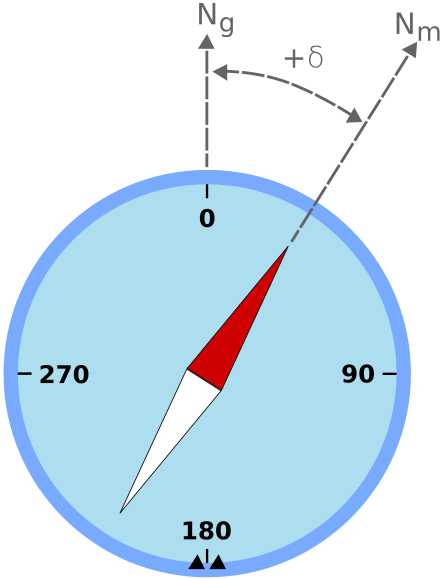Answer : B
Example of magnetic declination showing a compass needle with a "positive" (or "easterly") variation from geographic north. Ng is geographic or true north, Nm is magnetic north, and δ is magnetic declination
Magnetic declination or variation is the angle on the horizontal plane between magnetic north (the direction the north end of a compass needle points, corresponding to the direction of the Earth's magnetic field lines) and true north (the direction along a meridian towards the geographic North Pole). This angle varies depending on position on the Earth's surface, and changes over time.
Somewhat more formally, Bowditch defines variation as “the angle between the magnetic and geographic meridians at any place, expressed in degrees and minutes east or west to indicate the direction of magnetic north from true north. The angle between magnetic and grid meridians is called grid magnetic angle, grid variation, or grivation.”
By convention, declination is positive when magnetic north is east of true north, and negative when it is to the west. Isogonic linesare lines on the Earth's surface along which the declination has the same constant value, and lines along which the declination is zero are called agonic lines. The lowercase Greek letter δ (delta) is frequently used as the symbol for magnetic declination.
The term magnetic deviation is sometimes used loosely to mean the same as magnetic declination, but more correctly it refers to the error in a compass reading induced by nearby metallic objects, such as iron on board a ship or aircraft.
Magnetic declination should not be confused with magnetic inclination, also known as magnetic dip, which is the angle that the Earth's magnetic field lines make with the downward side of the horizontal plane.






0 comments:
Post a Comment